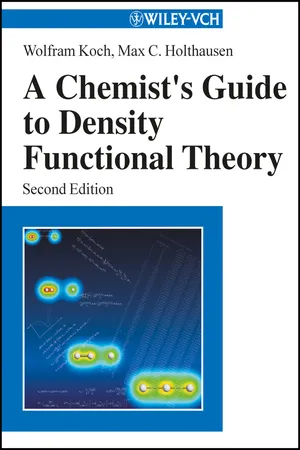
- English
- ePUB (mobile friendly)
- Available on iOS & Android
A Chemist's Guide to Density Functional Theory
About This Book
"Chemists familiar with conventional quantum mechanics will applaud and benefit greatly from this particularly instructive, thorough and clearly written exposition of density functional theory: its basis, concepts, terms, implementation, and performance in diverse applications. Users of DFT for structure, energy, and molecular property computations, as well as reaction mechanism studies, are guided to the optimum choices of the most effective methods. Well done!"
Paul von Rague Schleyer "A conspicuous hole in the computational chemist's library is nicely filled by this book, which provides a wide-ranging and pragmatic view of the subject.[...It] should justifiably become the favorite text on the subject for practioneers who aim to use DFT to solve chemical problems."
J. F. Stanton, J. Am. Chem. Soc. "The authors' aim is to guide the chemist through basic theoretical and related technical aspects of DFT at an easy-to-understand theoretical level. They succeed admirably."
P. C. H. Mitchell, Appl. Organomet. Chem. "The authors have done an excellent service to the chemical community. [...] A Chemist's Guide to Density Functional Theory is exactly what the title suggests. It should be an invaluable source of insight and knowledge for many chemists using DFT approaches to solve chemical problems."
M. Kaupp, Angew. Chem.
Frequently asked questions
Information
PART A
The Definition of the Model
1
Elementary Quantum Chemistry
1.1 The Schrödinger Equation











Table of contents
- Cover
- Table of Contents
- Series
- Title
- Copyright
- Foreword
- Preface
- Preface to the second edition
- PART A: The Definition of the Model
- PART B: The Performance of the Model
- Bibliography
- Index
- End User License Agreement